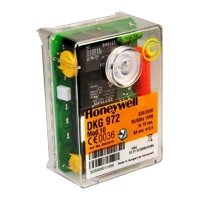Revision 10 ControlEdge HC900 Process & Safety Controller User and Installation Manual 181
May 2019
9.4. Steady State Operations
Lead Controller issues polls to I/O Racks for inputs
Both Lead and Reserve read I/O responses from I/O Racks
Lead and Reserve both execute function blocks in the control strategy
Only the Lead Controller writes physical outputs to the I/O Racks
Lead Controller responds to communication messages from host devices on the Supervisory
Network and RS-485 interfaces
Lead Controller handles communications with ControlEdge HC900 peers
Lead Controller handles communications with Modbus RTU slave devices
Lead and Reserve exchange system status data to determine conditions for failover.
I/O Scanners relay system status data between each Controller to determine conditions for
failover
Execution time
ControlEdge HC900 Controllers are designed to execute control functions within fixed scan cycles for
analog data types and logic data types. In redundant controllers, the default scan time is 500ms for analog
data types and 53ms legacy/ 25ms for new controllers, for logic data types.
Execution sequence
The type of control functions executed during a scan is determined by the system
configuration.
Controller configurations contain a series of algorithms in the form of function blocks that
get executed in a fixed sequence. The first 100 function blocks are pre-assigned by the
system to handle communication tasks, alarm processing, system monitoring functions, etc.
and cannot be changed by the user. Starting with function block number 101, the user may
select the type of function to be executed.
The sequence of function block execution is initially determined by the sequence in which the
function blocks are placed on the graphic diagram in HC Designer.
Final desired sequence must be set by the user to achieve proper and optimum performance.
Incorrect execution sequences can contribute to delays in processing outputs and/or improper
or unexpected operation.
The ControlEdge HC900 controller samples all inputs before the start of a controller scan.
Each input being used in the configuration must be assigned to a function block. The
sequence order of the function block determines when in time the actual value will be
updated. It is important that algorithms that need updated input values for their
calculations have the inputs execute first in the sequence.
Except for Time Proportioning Output (TPO), Three-Position-Step-Control (TPSC) and
Position Proportional Output (PPO) function block types that update their physical output
values while the function blocks are being executed, all physical outputs are updated at the
end of a scan.

